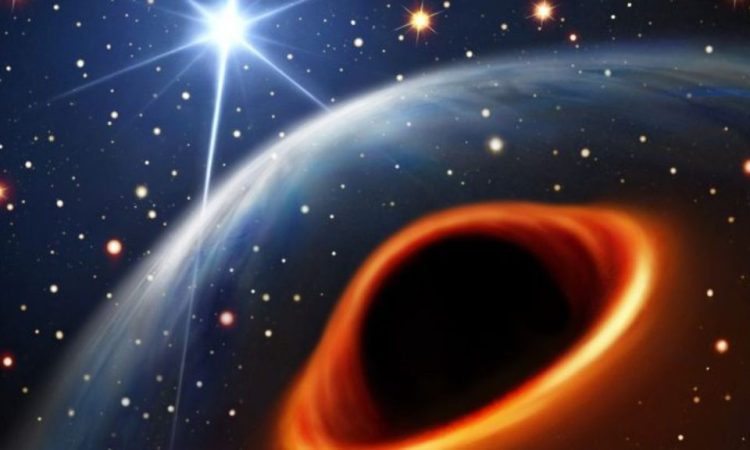
Could it be the indicator of one of the most sought-after objects in the galaxy: the smallest black hole ever discovered?
About 5,825 light years from Earth, a red giant star was spotted moving in a slow orbital dance with a binary companion. The problem? There is no light coming from the place where the binary companion should be. But the mystery doesn’t end there. Based on the behavior, astronomers led by Song Wang of the Chinese Academy of Sciences determined that the mass of the invisible object is just 3.6 times that of the Sun. It can only be one thing: a small black hole that it sits right in the middle of a mysterious gap in the data known as lower mass gap. This is a mass range in which we expect no or few compact objects to exist.
Advertisement
The discovery of G3425
“The rare discovery of G3425 provides evidence for the existence of mass gap black holes in non-interacting binary systems, which are difficult to detect via X-ray emission,” the researchers write in their study. “In particular, the formation of its surprisingly wide circular orbit challenges current theories of binary evolution and “.
Black holes are on a continuum of ultradense objects that form from the residual cores of dead stars after they run out of fuel and collapse under their own gravity. White dwarfs form from stars up to about 8 times the mass of the Sun and have an upper mass limit of about 1.4 times the mass of the Sun.
Heavier objects become even denser: these are neutron stars, up to about 2.3 solar masses (although there may be some overlap between mass ranges). Beyond 2.3 solar masses, a neutron star can no longer withstand the internal pressure of gravity. It should collapse completely, forming a black hole.
The mass gap and the presence of a black hole
This is where the mass gap comes into play. We have detected very few black hole candidates smaller than five solar masses. Either we are really bad at finding them, or something is preventing them from forming. Being really bad at finding them isn’t entirely out of the realm of possibility, actually. Unless they are actively growing, a process that generates X-rays from material swirling around the black hole under extreme gravitational influences, black holes are very . They can have an effect on things around them, but the smaller the black hole, the less pronounced this effect is.
ESA: the Gaia mission
The European Space Agency’s Gaia mission, however, is giving us a great tool for finding the invisible. The long-term mission is mapping the Milky Way in three dimensions, including the movements and speeds of the stars. This means that when we find a star that appears to be in a dance, we can now take a closer look to see what might, or might not, be there.
The red giant G3425
The red giant star in G3425 has an estimated mass of about 2.7 suns. And its motion suggests it is on a relatively wide orbit, taking about 880 days to move around a common center of gravity with an object calculated to be about 3.6 times the mass of the Sun.
That orbit, according to scientists’ models, is quite circular. Other stellar-mass black holes in binary systems tend to have elliptical orbits. A circular orbit means that the binary system has been stable and undisturbed for a long time. This is not very consistent with our understanding of black holes, since the supernova that produces the black hole can create a rather large disturbance, causing the black hole itself to become unbalanced or to fly through space at high speed.
Read more:

